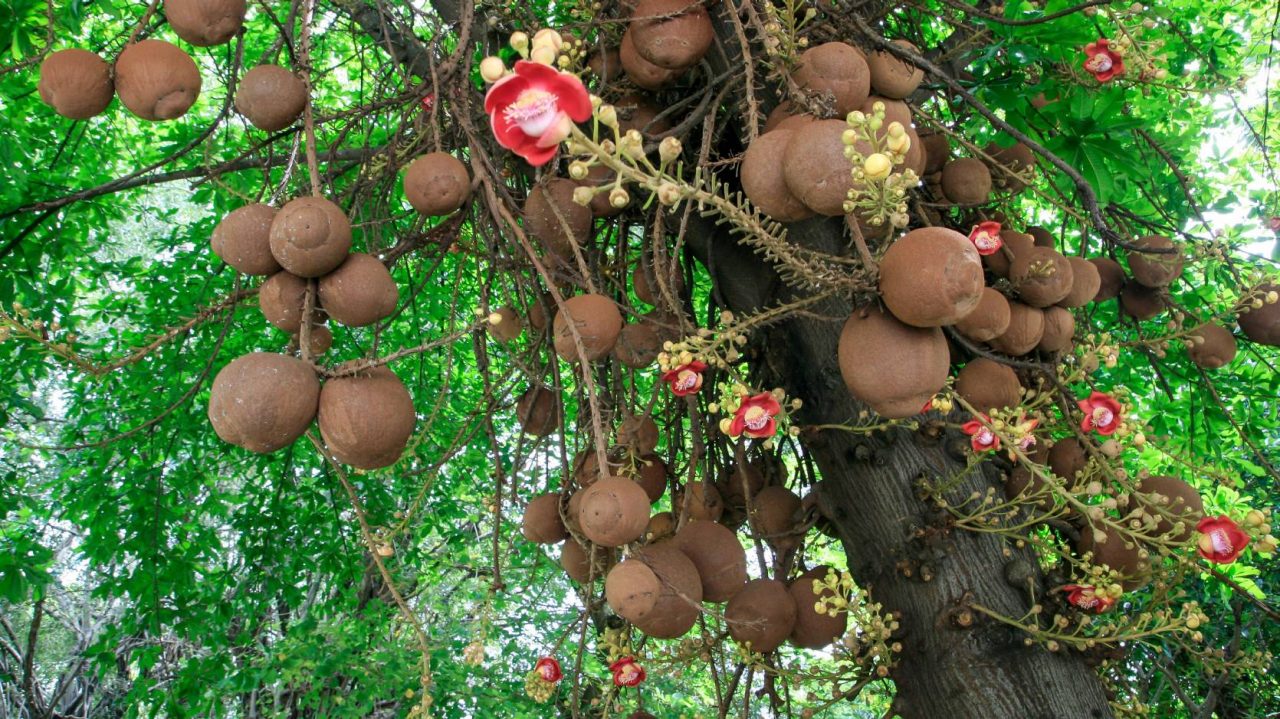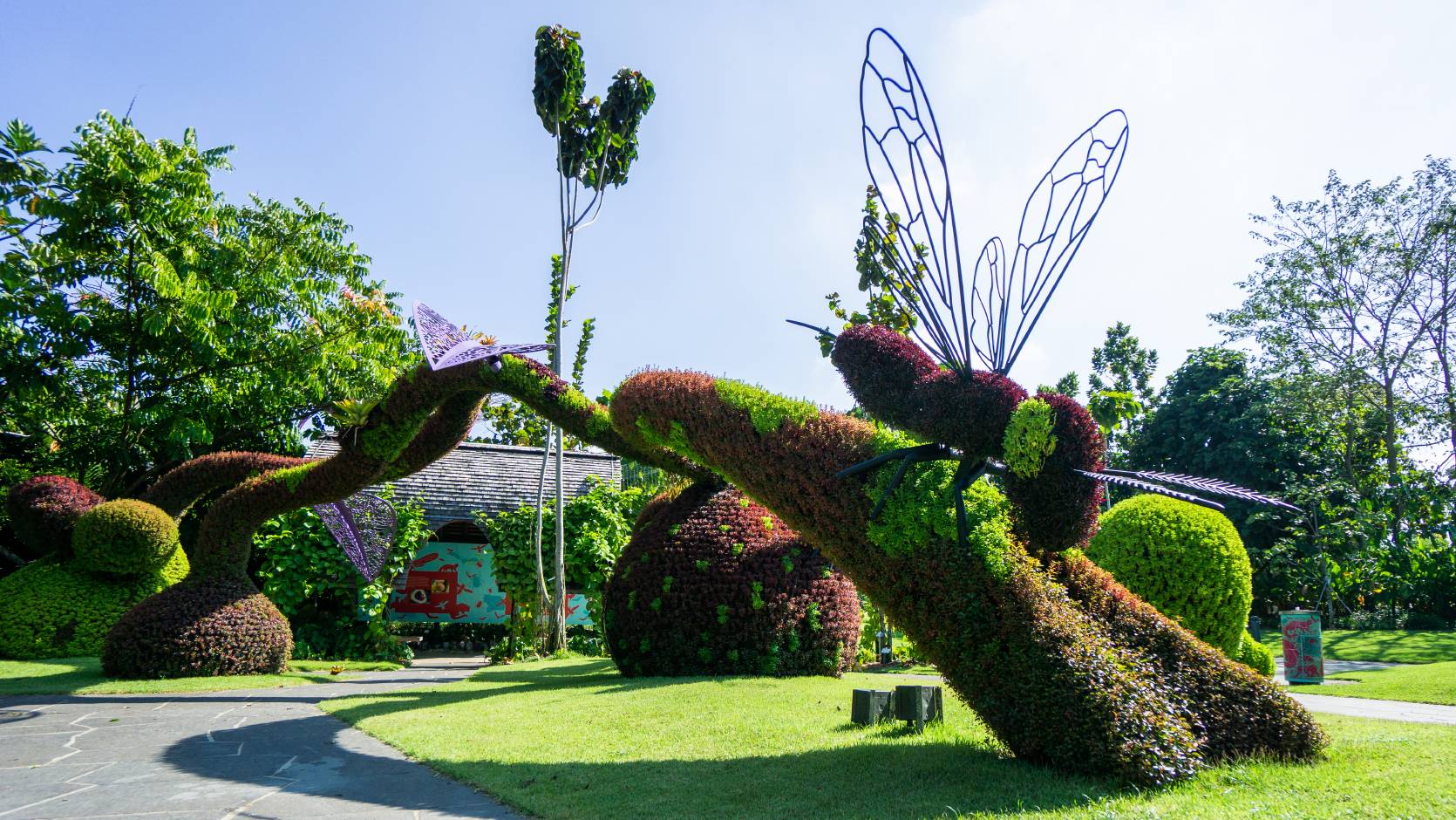World of Plants - Fruits and Flowers
Fruits and flowers play an important role in the reproduction of plants. With their diverse forms and specific characteristics, they are vital in the processes of pollination and seed dispersal which help plants to make new plants!


Cannonball Tree
Aptly-named, the large and heavy, spherical, brown fruits of this tree certainly resemble cannonballs! When split open, its pulp exudes an unpleasant odour that appeals to pig-like mammals that help in dispersing its seeds. Its pinkish-red blooms surprisingly lack nectar but give off a sweet and strong fragrance. To attract bees, it produces two types of pollen - sterile pollen that they feed on, and fertile pollen that dusts their backs as they feed, which in turn effect cross-pollination when the bees visit other flowers.

Sausage Tree
These large, elongated, greyish-brown fruits might look like giant sausages but they are not suitable for human consumption. Weighing up to 12 kg, the raw fruit is toxic, though when roasted can be used to flavour or ferment a local beer in Malawi. Its pendulous, trumpet-shaped, maroon flowers are nectar-rich to attract pollinators such as bats, hawk moths and birds.

Scented Daphne
This small tree has spectacular masses of white, pineapple-scented, tubular flowers that occur on its trunk and branches – a strategy that enables small animals to climb on to pollinate its blooms or feed on its fruits. The vividly red, glossy, ovoid fruits are said to be poisonous to humans but relished by cassowaries.
Written by: Choo E-Hui, Manager (Partnerships, Programming)
E-Hui likes the simplicity of her name. Don’t ask her why it's spelled as such or attempt to shorten it further without the hyphen. She will get a little annoyed (just so you know!). In her own time, she enjoys tennis though feels she's just a mediocre player.



